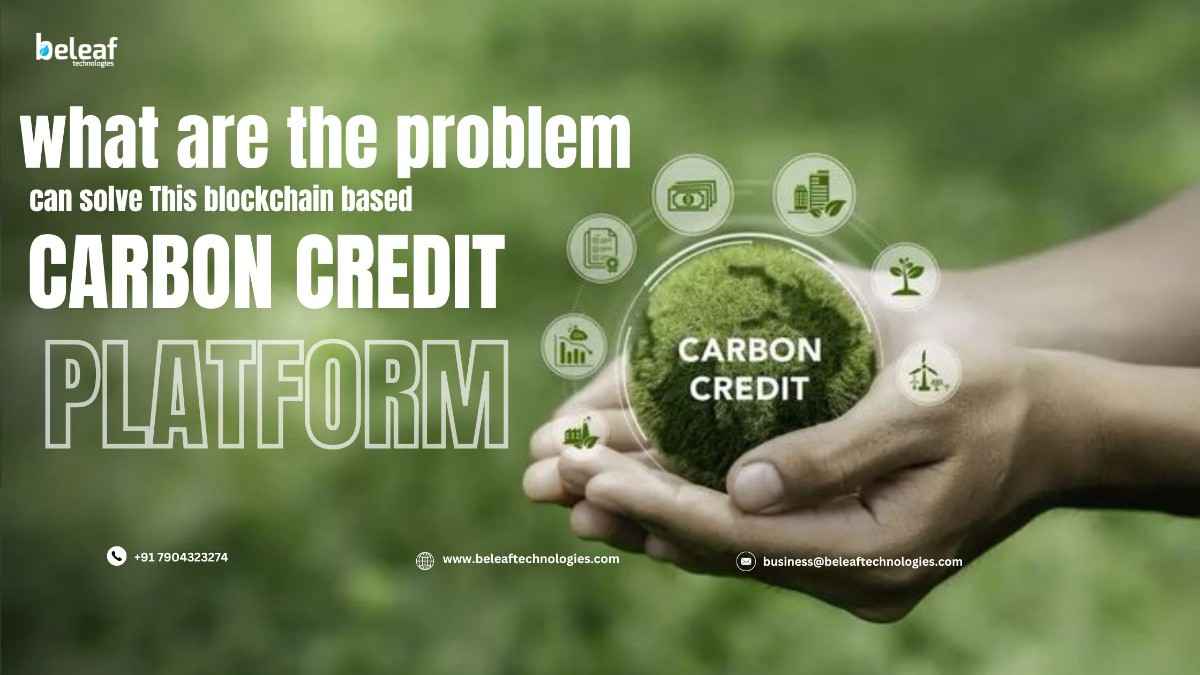


Below are the main problems that such a platform can solve.
Below are the main problems that such a platform can solve.
One of the main problems with traditional carbon credit systems is the lack of clear and open information. Often, it is hard to see where a carbon credit came from, who owns it now, and whether it has already been used. This creates room for confusion and even fraud.
With a blockchain-based carbon credit platform, every transaction is recorded in a public ledger. Anyone can check the history of a carbon credit — from the project that created it, to the companies that traded it, to its final use. This makes it much harder to hide bad practices and much easier to prove that a credit is real.
Double counting happens when the same carbon credit is used more than once. For example, a project might claim a credit for reducing emissions, and later, another company might claim the same credit as if it were new. This reduces the real impact of carbon reduction efforts.
On a blockchain platform, once a carbon credit is used, the system marks it permanently as “retired” and it cannot be traded again. This prevents double counting and ensures that each credit represents a real, one-time reduction in emissions.
In traditional carbon markets, the process of verifying, issuing, and trading credits can take a long time. It involves multiple middlemen, paperwork, and approval steps. This slows down trading and makes it harder for smaller projects or companies to take part.
A blockchain-based system can automate much of the work. Smart contracts — pieces of code that run on the blockchain — can automatically process trades, check rules, and issue new credits when certain conditions are met. This reduces delays and allows the market to operate more smoothly.
Small environmental projects, especially in developing countries, often struggle to enter the carbon credit market. The costs of verification and trading can be too high. As a result, many good projects that could reduce emissions never get the funding they need.
A blockchain carbon credit platform can make it easier for these projects to join. The costs of listing credits can be lower because the system removes many middlemen. Payment can also be faster, as funds can be sent directly to the project through digital tokens.
In many cases, it is hard to track whether the project behind a carbon credit continues to deliver environmental benefits over time. For example, a forest protection project might stop being effective if the trees are later cut down.
With blockchain, the platform can connect to ongoing monitoring tools. Satellite data, drones, and sensors can send updates to the blockchain. This allows buyers and regulators to see if a project is still delivering results. If a project fails, the system can block future credits from it.
Verifying carbon credits often requires expensive audits and field visits. This makes the whole process costly and sometimes too slow.
By using blockchain, the platform can collect and store data from automated sources such as sensors, remote sensing tools, and independent digital verifiers. This reduces the need for constant manual checks, which lowers the cost of verification without reducing trust.
The carbon credit system has the potential to be a powerful tool in the fight against climate change. However, the current system faces many problems — from fraud and double counting to slow processes and limited access. A blockchain-based carbon credit platform offers clear solutions to many of these issues.
By improving transparency, preventing double counting, reducing fraud, lowering costs, and enabling faster and wider participation, blockchain can help create a more trustworthy and effective carbon credit market. This, in turn, can direct more funds toward projects that truly reduce greenhouse gas emissions and help the planet.
